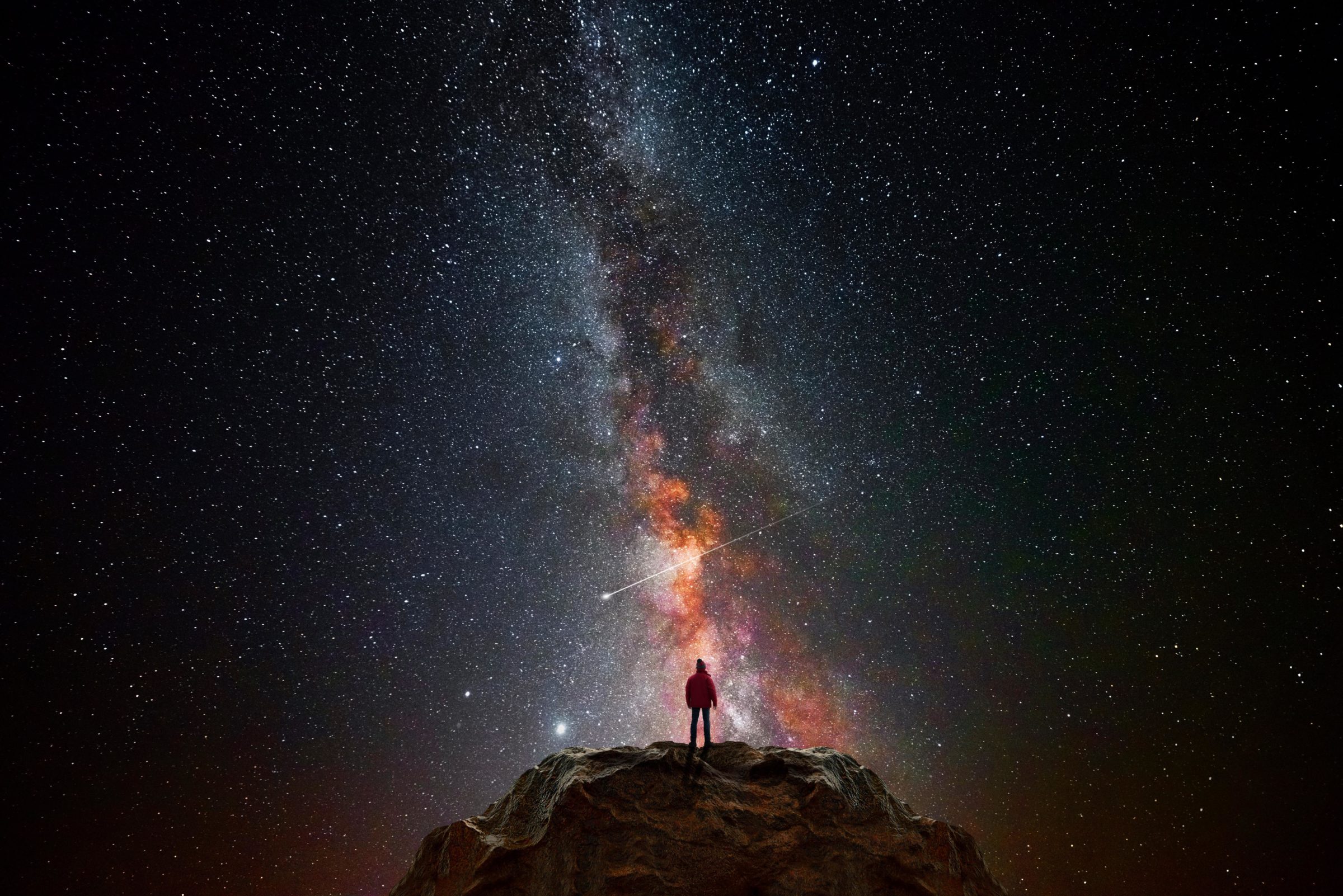Headlines lately have not been encouraging for the faithful. A Gallup poll shows that the percentage of Americans who believe in God has fallen to 81 percent—a drop of 10 percent over the last decade and an all-time low. This accelerating trend is especially pronounced among young adults. According to a Pew Research Center poll, 18-29 year-olds are disproportionately represented among so-called “nones”—atheists, agnostics and the religiously unaffiliated.
Pastors and other religious leaders have attributed this trend to many factors: young people being raised outside the church, an unfamiliarity with liturgy and church culture, even COVID-19.
Get a free, 32-page mini-book by Dr. Stephen Meyer, Sceintific Evidence for a Creator
We found another answer in our national survey to probe the underlying reasons for this growing unbelief: a misunderstanding of science.
Perhaps surprisingly, our survey discovered that the perceived message of science has played a leading role in the loss of faith. We found that scientific theories about the unguided evolution of life have, in particular, led more people to reject belief in God than worries about suffering, disease, or death. It also showed that 65 percent of self-described atheists and 43 percent of agnostics believe “the findings of science [generally] make the existence of God less probable.”
It’s easy to see why this perception has proliferated. In recent years, many scientists have emerged as celebrity spokesmen for atheism. Richard Dawkins, Lawrence Krauss, Bill Nye, Michael Shermer, the late Stephen Hawking, and others have published popular books arguing that science renders belief in God unnecessary or implausible. “The universe we observe has precisely the properties we should expect if, at bottom, there is no purpose, no design… nothing but blind, pitiless indifference,” Dawkins famously wrote.
Yet, between message and reality, there is a major disconnect. Over the last century, important scientific discoveries have dramatically challenged science-based atheism, and three in particular now tell a decidedly more God-friendly story.
First, scientists have discovered that the physical universe had a beginning. This finding, supported by observational astronomy and theoretical physics, contradicts the expectations of scientific atheists, who long portrayed the universe as eternal and self-existent—and, therefore, in no need of an external creator.
Evidence for what scientists call the Big Bang has instead confirmed the expectations of traditional theists. Nobel laureate Arno Penzias, who helped make a key discovery supporting the Big Bang theory, has noted the obvious connection between its affirmation of a cosmic beginning and the concept of divine creation. “The best data we have are exactly what I would have predicted, had I nothing to go on but the five books of Moses…[and] the Bible as a whole,” writes Penzias.
Second, discoveries from physics about the structure of the universe reinforce this theistic conclusion. Since the 1960s, physicists have determined that the fundamental physical laws and parameters of our universe are finely tuned, against all odds, to make our universe capable of hosting life. Even slight alterations of many independent factors—such as the strength of gravitational or electromagnetic attraction, or the initial arrangement of matter and energy in the universe—would have rendered life impossible. Scientists have discovered that we live in a kind of “Goldilocks Universe,” or what Australian physicist Luke Barnes calls an extremely “Fortunate Universe.”
Not surprisingly, many physicists have concluded that this improbable fine-tuning points to a cosmic “fine-tuner.” As former Cambridge astrophysicist Sir Fred Hoyle argued, “A common-sense interpretation of the data suggests that a super-intellect has monkeyed with physics” to make life possible.
Third, molecular biology has revealed the presence in living cells of an exquisite world of informational nanotechnology. These include digital code in DNA and RNA—tiny, intricately constructed molecular machines which vastly exceed our own digital high technology in their storage and transmission capabilities. And even Richard Dawkins has acknowledged that “the machine code of the genes is uncannily computer-like” — implying, it would seem, the activity of a master programmer at work the origin of life. At the very least, the discoveries of modern biology are not what anyone would have expected from blind materialistic processes.
All this underscores a growing disparity between public perceptions of the message of science and what scientific evidence actually shows. Far from pointing to “blind, pitiless indifference,” the great discoveries of the last century point to the exquisite design of life and the universe and, arguably, to an intelligent creator behind it all.
Get a free, 32-page mini-book by Dr. Stephen Meyer, Sceintific Evidence for a Creator
